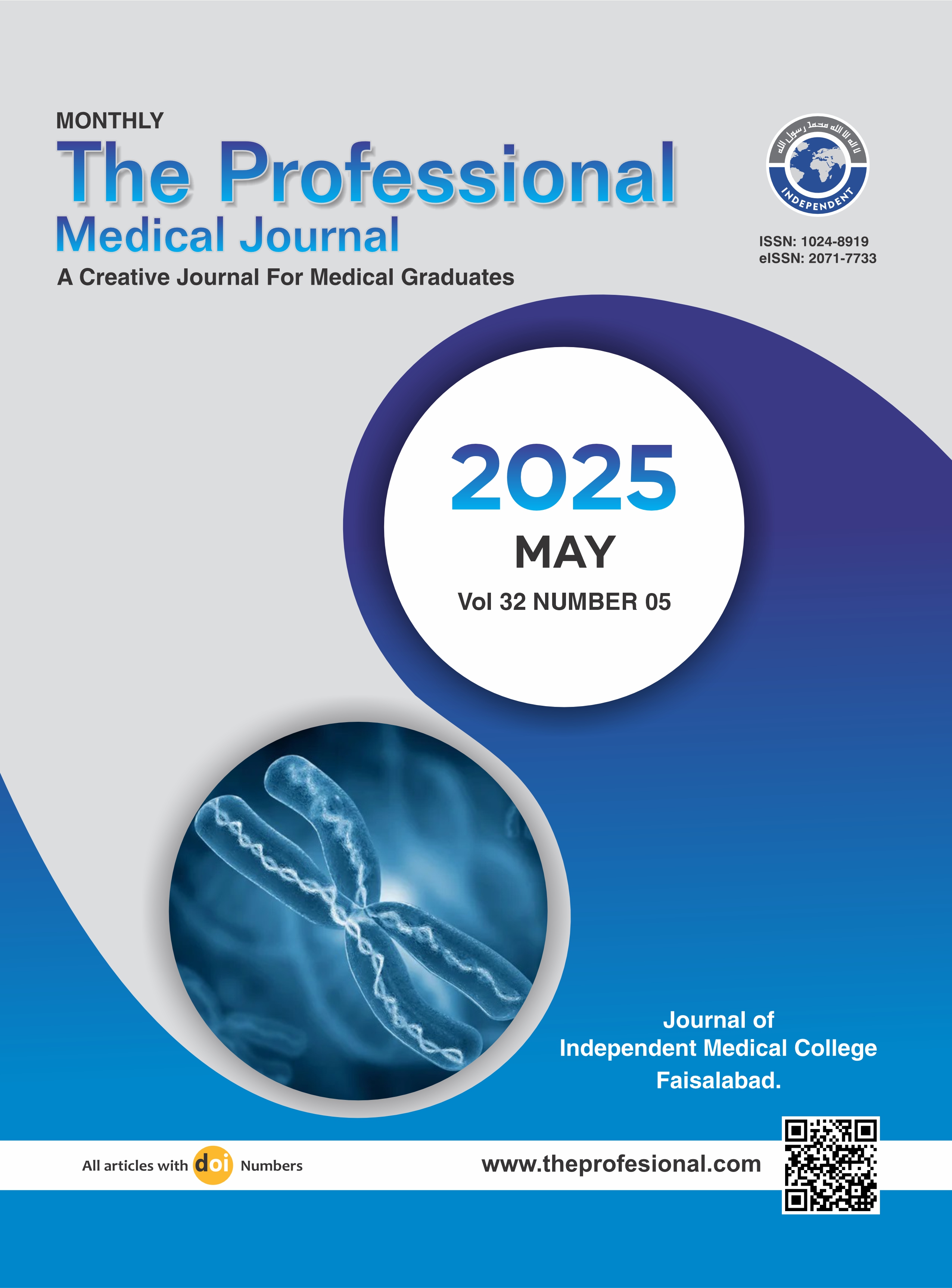Common electrolyte imbalance in neonates presenting with acute kidney injury in NICU.
DOI:
https://doi.org/10.29309/TPMJ/2025.32.05.9112Keywords:
Acute Kidney Injury, Dyskalemia, Dysnatremia, Electrolyte Imbalance, Neonatal Intensive Care UnitAbstract
Objective: To determine common electrolyte imbalance among neonates admitting in neonatal intensive care unit (NICU) with acute kidney injury (AKI). Study Design: Cross-sectional study. Setting: The NICU of National Institute of Child Health (NICH), Karachi, Pakistan. Period: 13th August 2024 to 30th January 2024. Methods: A total of 196 neonates of either gender and admitted in NICU with AKI were evaluated. At the time of enrollment, demographical and clinical information were noted. Neonate’s blood was drawn upon their admission in NICU for laboratory investigation in which their electrolyte profile was investigated. Data was analyzed using IBM-SPSS Statistics, version 26.0. For all inferential statistics, p<0.05 was noted. Results: In a total of 196 neonates, 104 (53.1%) were boys and 92 (46.9%) girls. The mean age, and birth weight were 7.24±6.08 days, and 2.35±0.56 kg, respectively. Prematurity was noted in 69 (35.2%) cases. Sepsis, and respiratory distress were identified 108 (55.1%), and 80 (40.8%) neonates, respectively. Socio-economic status was low among 180 (91.8%) cases. Acute kidney stage was 1, 2, and 3 among 118 (60.2%), 37 (18.9%), and 41 (20.9%) neonates, respectively. Electrolyte imbalance was noted among 123 (62.8%) neonates. The most frequent electrolyte imbalance was dysnatremia, and dyskalemia, noted in 94(47.9%), and 37 (18.9%) neonates, respectively. Electrolyte imbalance was significantly associated with prematurity (49.6% vs. 11.0%, p<0.001), and higher stages of AKI (p=0.012). Conclusion: This study highlighted a high prevalence of electrolyte imbalances, particularly sodium and potassium disturbances, among neonates with AKI admitted to the NICU.
Downloads
Published
Issue
Section
License
Copyright (c) 2025 The Professional Medical Journal

This work is licensed under a Creative Commons Attribution-NonCommercial 4.0 International License.


